THE POWER OF BELIEF (HOW TO HARNESS IT FOR YOUR OWN WELLBEING)
The Power Of Belief (How To Harness It For Your Own Wellbeing)
The Power of Belief – By Dr Pat Partington
(Click on the Reference Numbers in Blue for More Info)
In the late 1990s, the renowned surgeon Dr Bruce Moseley pondered the fact that half of all patients receiving his surgery for unbearable knee osteoarthritis would recover successfully. Free of debilitating pain they were able to return to all the valued activities of their previous lives. Some went back to work, some got back to gardening, some took up new activities, some are even shown in online videos playing basketball, but all of them regained their lives. Surgery can be wonderful when it works out like that. However, this also means that half of his patients failed to respond to the very same arthroscopic procedure and, as such, were condemned to continue their lives marred by destructive pain and disability.
Moseley wondered what factors might be at play in the success or otherwise of his surgery. He was very aware that, in his own words, “the physiological basis for pain relief is unclear” so perhaps there was a psychological influence on his outcomes? Of course, research into the psychological component of pain is well established (1) but more specifically, he pondered, what contribution might a patient’s belief make to the success or otherwise of his surgery? To satisfy his curiosity, but also contribute to what’s known about successful surgery, he set up an ingeniously imaginative experiment, the results of which continue to astonish newcomers to the medical profession to this day.
Dr Moseley (2) took one group of patients and performed his surgery as usual. The other group went through an elaborately fashioned sham surgery, completely authentic even down to the tiniest detail, except no arthroscopic surgery took place. So both groups of patients, 165 people in total, were told they would receive either real surgery or sham surgery. Both groups went through the same pre-op process and were wheeled down to theatre in just the same way. Of course, you would know if you had been allocated to the sham group, wouldn’t you? The post-surgery scar would be highly conspicuous by its absence. Here’s the clever part, Dr Moseley made exactly the same incisions into the knees, in exactly the same places, but without the arthroscopic procedure. Yes, he cut them open and sewed them back up again! To keep the experience as genuine as possible he even splashed about some saline to recreate the same ‘washing out’ sound of the surgery. In constructing his experiment this way Dr Moseley was carefully ensuring that all 165 patients, whether they received real surgery or not, had equal levels of belief. So what happened?
Let me remind you of the title of this article, it’s the extraordinary power of belief and, extraordinarily, the results of Moseley’s study showed that the clinical outcomes for both groups were equal. Yes, the same number of patients receiving fake surgery resolved their pain and recovered their lives as those receiving the real surgery. Astonishingly (I can’t keep saying extraordinarily) the power of belief was shown to be equally effective as this longstanding surgical intervention, which continues to be used to this day. Of course, the more discerning reader will quickly recognise that I’ve described a placebo-controlled study and in this case, as with thousands of other studies (3), placebo has come out splendidly. That’s why the medical profession has long since stopped thinking of the placebo as a nuisance that gets in the way of clinical trials and has turned its attention to exploring how to make use of this powerful context-driven mental process (4). What’s more, this remarkable influence of the mind isn’t confined to pain, it appears to be equally effective for a whole range of other medical conditions.
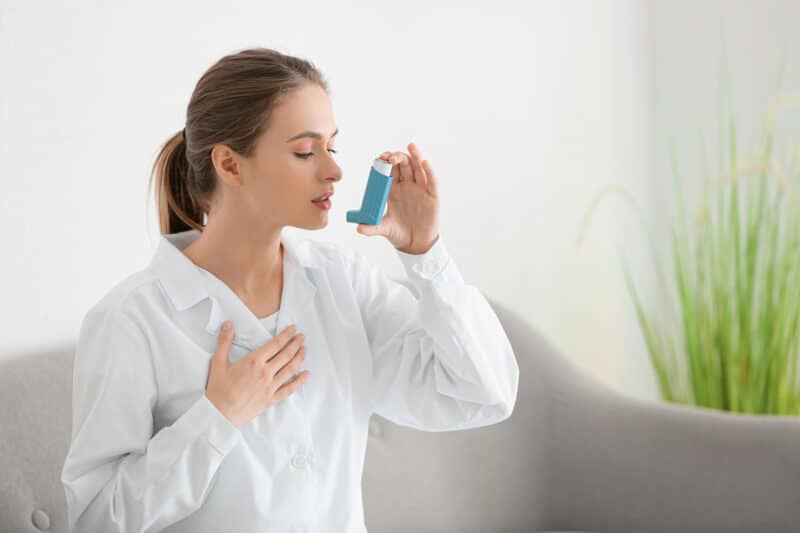
Believe You Can Breathe
Take asthma for example. For some people, an irritant will cause their airways to narrow, swell and produce excessive mucus. Shortness of breath, coughing and wheezing are all signals to the asthmatic that something is wrong and needs to be put right. This, of course, is achieved with the aid of an inhaler, which gets medicine directly into the lungs, relaxing the muscles around the airways and easing breathing. Any place here for the influence of belief? Well, scientific studies (5) have shown that when asthmatic patients are provided with an inhaler containing nothing more than a saline solution the power of their belief will relax and open their airways almost as effectively as albuterol, a very effective quick-relief medication. This can work for up to 50% of patients but, of course, only when their beliefs are manipulated by being told the inhaler is the genuine article. Can you believe that though? An inhaler with no medicine at all, just vaporised saline, can effectively relieve symptoms of asthma!
This seems like a good place to make an important announcement: do not throw away your inhaler! I know as if you’d be that stupid, but just in case let me say it again: do not throw away your inhaler! Inhalers are essential for those with asthma, just as surgery is essential for many conditions of pain. No, if we are going to achieve optimal physical health the very best way to use the power of belief is as an adjunct to existing evidence-based treatments and interventions. I’ll come back to this, but let’s get on with our story of the power of positive belief because it doesn’t end here. No, when it comes to good health there’s so much more that can be influenced by the electrochemical activity that takes place between the ears.
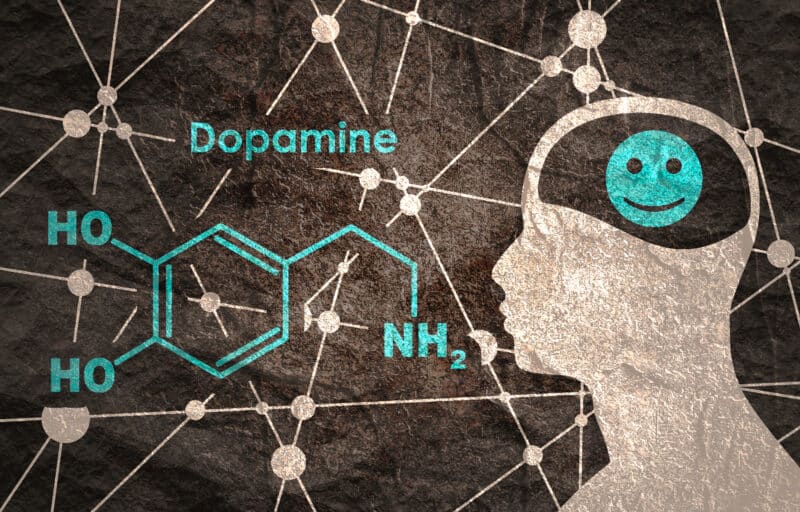
Believe In Your Brain
Our beliefs influence not only the physiology of our bodies but also the neurochemistry of our brains. For example, most of the feel-good chemicals produced in the brain by widely prescribed antidepressants come, not just from the active ingredient but from the power of the patient’s positive belief. In fact, research (6) has shown that around 80% of the improvements accounted for by most antidepressants were duplicated in placebo groups. Positive belief systems have been shown to alter the activity of dopamine neurons in the brains of those with Parkinson’s disease, leading to life-changing improvements in their condition (7). For traumatic brain injury positive belief has repeatedly been shown to be as effective as pharmaceutical interventions in gaining favourable treatment outcomes (8). It has been shown to relieve headache (9), reduce blood pressure (10), heal duodenal ulcers (11), and enhance the activity of natural killer cells in the blood (12), boosting immunity and protecting against an array of diseases (13). It would seem that mind-body medicine, once the domain of the new-age movement, is dragging even the most sceptical into the biopsychosocial model of twenty-first-century medicine.

Believe In Your Treatments
There’s no question that most medications work, but they work better when accompanied by positive belief. For example, most people know that morphine is among the strongest of painkillers, but most people probably don’t know that it is more effective when enhanced by the power of positive belief. For example, a study published in The Lancet (14) has shown that when a doctor tells a patient, “I’m giving you morphine, a strong painkiller”, it actually becomes a more effective painkiller compared to when administered intravenously, outside the patient’s awareness. Clearly then, leveraging the extraordinary power of belief in this way truly opens the door to combinations of mind-body applications. For example, it is entirely reasonable to assume that positive belief could be legitimately employed to enhance less potent, and therefore less harmful, pharmacological treatments. It’s already well accepted that doctors who are able to encourage higher levels of belief and expectancy in their treatments reliably enjoy profoundly better outcomes than their less skilfully communicative colleagues (15) and this is particularly relevant to chronic pain (16). More evidence of the additive effect of positive belief comes from physical rehabilitation, where clinical outcomes are improved when patients’ belief systems are enhanced (17). What’s more, delivery of this additive effect need not be overly complicated.
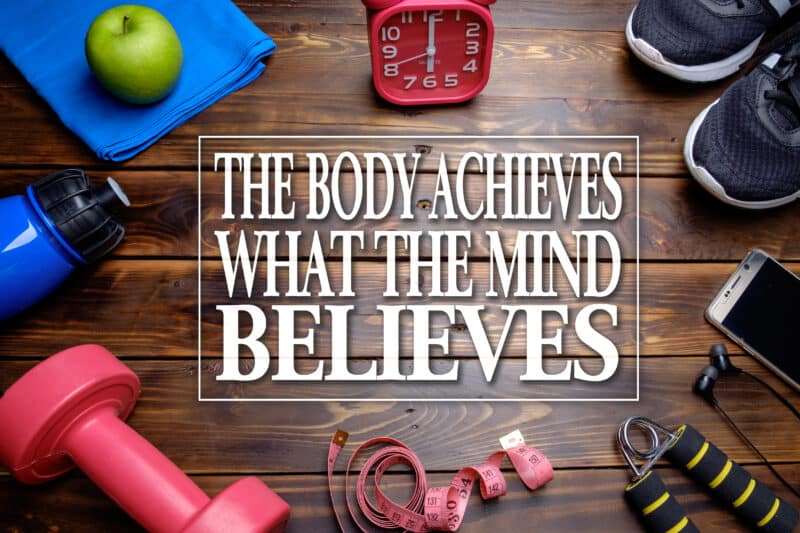
Believe In Exercise
How do you get physically active people to gain even more health benefits from their efforts? Strange question perhaps, but the fact is that we don’t all get the same benefits from the same exercise. Researchers in the US (18) took 84 hotel room attendants and told half of them that their energetic work was beneficial to their health. More specifically, they were informed of their exact calorie expenditure and told that, in fact, their work exceeds the Surgeon General’s recommendations for physical activity. The other half, the control group, was left uninformed of these health benefits. Over the month that followed there were no changes in behaviours – nobody did any more or less work than before or engaged in exercise outside of their work. At the end of the month the “informed group” showed improvements in weight, blood pressure, body fat, waist-to-hip ratio, and body mass index, improvements that were not observed in the control group. Whereas the studies described earlier were deceptive in their belief-generating efforts, this education-based approach delivers an entirely non-deceptive health-enhancing belief system.
There’s an intriguing twist to theme of this story, which was uncovered by researchers (19) examining statistical data from more than sixty-one thousand people in the US. These data included activity levels (which were objectively recorded), beliefs regarding the health benefits of their activity as well as beliefs regarding the activity levels of their peers. Firstly they found, as was to be expected, that those who exercised more lived longer, healthier lives. No surprises there then. However, the surprises jump out on us when we look at the influence of belief on mortality. That’s because the researchers also found that, regardless of how much they actually exercised, those who believed themselves to be less physically active than their peers were up to seventy-one per cent more likely to die in the twenty-one year follow up period than those who believed themselves to be more active.
This speaks loudly and clearly to the additive effect of belief because, of course, no amount of belief is going to guarantee an extended life for the couch potato. However, even low to moderate levels of physical activity can have a significant impact on longevity when we are fully aware of the benefits, as with the hotel room attendants, and when we believe that these benefits are personally achievable.

Believe In Yourself And Others
In his book, “Pygmalion in the Classroom” (20) Dr Robert Rosenthal published the results of one of his experiments in manipulating teachers’ beliefs about themselves and their students. An “elite” group of teachers were told by the principal that, because of their teaching excellence, they would be specially assigned a group of the brightest students in the school. They were told to use the exact same curriculum they were using for the other students but were instructed not to tell these gifted students of the arrangement.
At the end of the year, these students topped the entire school district in academic achievement. No surprise there you’d suppose, but you haven’t heard the best bit yet. These “elite” groups of both students and teachers had been randomly selected from the general school population!
While this study has, since its publication, been criticised for its data collection methods – a small point in my opinion – it clearly emphasises the fact that when we believe in ourselves and in others we can all achieve things that were way beyond our initial expectations. More recent studies have framed this belief system as a “growth mindset” (21) and there is now a wealth of research to show that improvements to our beliefs will be matched by improvements to our academic achievement (22). But what can you do to ensure that you get your beliefs working for you to the very best possible effect? Well, I’m just going to tell you.
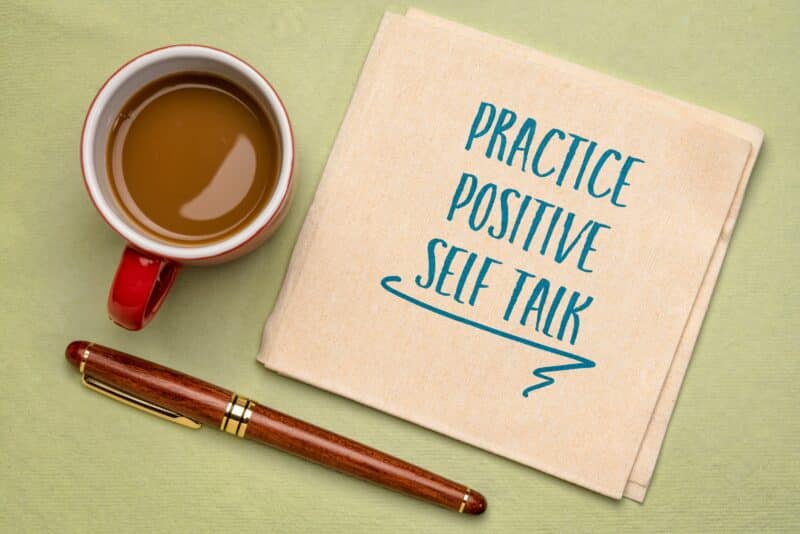
Believe In Your Self-Talk
“Every day, in every way, I’m getting better and better.” Émile Coué
This quote is very old, in fact I first came across it as a child watching an old black and white episode of Laurel and Hardy. It actually dates all the way back to the late 19th century when French pharmacist Émile Coué found that he could reliably increase the benefits people achieve from their medications simply by telling them something along the lines of “You’re going to feel so much better in the morning with this!” He initially set up mini-experiments whereby he would add the verbal boost to every other patient, while the alternate patients would simply be handed their medications, straight-faced and without encouragement.
Those who received such recommendations, he reported, would always do better than those without encouragement. This is anecdotal of course, but little did he know that, actually, he was performing probably the very first controlled medical trials. Not that he was comparing an active treatment with a placebo, as was the case with Moseley’s surgery, but rather he was demonstrating the powerful effect of practitioner influence, and therefore belief, on treatment outcomes. An influence so strong that clinical trials must now be “blinded”, meaning that even the doctor who dispenses the medication must be unaware of the capsule real content.
Think about that for a minute, just the fact of knowing something is real or sham can be communicated to the patient such that their belief can make the placebo as effective as the medical treatment. What’s more, some studies are “double-blinded”, meaning that even the researchers don’t know who is getting the real or sham treatment, such is the power of belief! But let’s get back to Laurel and Hardy.
The activity with which our monochrome heroes were engaged was something Émile Coué named autosuggestion. He reasoned that if we were to give ourselves the same kind of suggestions that he was giving his patients we could all self-manage our health, but it didn’t end there. Self-belief, articulated through autosuggestion, has been used to help people in every aspect of their lives, most notably demonstrated in sports performance. Take these quotes from an especially successful proponent of the boosted belief system, the notorious Conor McGregor:
“My success isn’t a result of arrogance. It’s a result of belief.”
“Excellence is not a skill. Excellence is an attitude.”
“All that matters is how you see yourself.”
“Winners focus on winning. Losers focus on winners.”
Feeling motivated? McGregor is always good for a motivational quote and almost all of them demonstrate the extraordinary levels of belief that he holds for himself. The sport psychology literature has, over the years, accumulated a wealth of research evidence (23) for the benefits of positive self-talk for improving performance in such diverse disciplines as golf (24), sprinting (25), softball (26), basketball (27), tennis (28), endurance sport (29) and cricket (30) to name just a few.
When we talk to ourselves our brains automatically produce matching images. For example, if you were a boxer you might say to yourself, “Tomorrow’s fight is going to be a really tough one”, which will conjure images of yourself struggling with a below-par performance. You’ll see your opponent as strong, fit and fast (see McGregor’s final quote, above) and you’ll be inadvertently engaging in mental imagery, which is particularly powerful, be it for good or bad.
So when you work on your self-talk you’re taking the first step toward positive mental imagery, the staple of every successful sports psychologist. Much better to say to yourself, “I’m going to use my strength and skill to get through the tough times that’ll come before winning” or even, “I might be taken to some dark places but I know I can use my power to come through and win”. I’ll take you through the process of effective mental imagery in a future article but for now, it’s important not just to visualise yourself as the successful end product, which is what too many self-help gurus recommend, but also to visualise yourself overcoming difficulties along the way. If you only focus on the final success your subconscious mind will assume that victory is a given and you won’t be prepared for the hard work needed to achieve this successful outcome.
As Mike Tyson famously said, “Everyone’s got a plan until they get punched in the face”, so practice getting punched in the face, metaphorically that is, so you know how to respond when it happens. The bottom line is that positive self-talk ensures positive mental imagery. But remember, this is much more than positive thinking, as useful as that can be, this is positive believing. So how do we turn a thought into a belief?
“If you have a clear picture in your head that something is going to happen and a clear belief that it will happen no matter what, then nothing can stop it. It is destined to happen. It’s perfect.” Conor McGregor
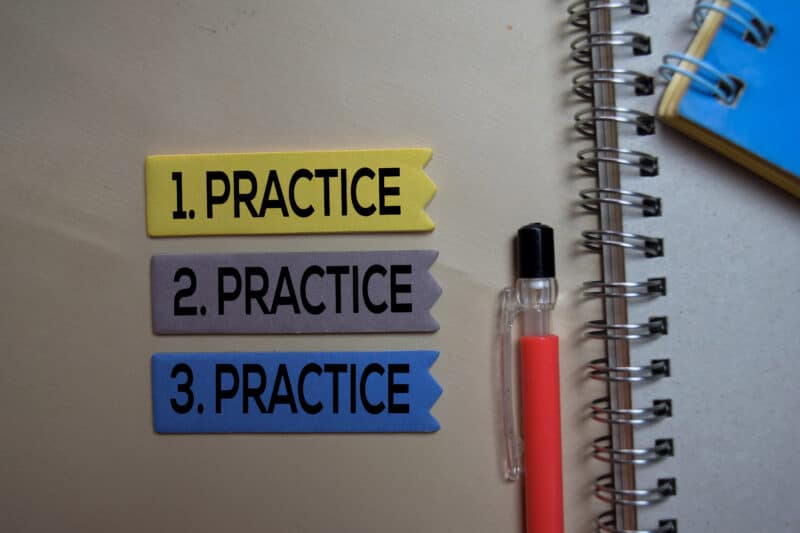
How To Believe Your Own Self-Talk
Here is a simple, but powerfully effective, four-step process to generating authentic self-belief: firstly construct your thought, secondly create an emotion, thirdly embed your thought into the emotion, and finally reprogramme your brain with repetition.
- Your thought can be specific, as in the boxing example above, or more global, as in Coue’s ‘Every day in every way’ autosuggestion, but it needs to be stated positively and it needs some ‘hot’ emotional words. In those examples, I used the words strength, skill, win and power, which are all meaningfully positive and will inspire and motivate you toward success. So if you have an exam, driving test or competition coming up, remind yourself of your own abilities and personal characteristics that you are going to call upon, and then frame them within a positive outcome. In other words, don’t say to yourself “I’m not going to fail… there’s no way I can fail” because your brain will hear the ‘hot’ word “fail” and delete the rest. Yes, the power of belief works both ways so always keep it positive.
Another important consideration is that you must not lie to yourself or give yourself any superpowers that you couldn’t conceivably possess. We are aiming to make you the best that you can possibly be and give you the belief that you can achieve your own personal goals. Keep your thoughts short and punchy so they are easy to remember and repeat them regularly even when you feel you don’t really need to.
- A simple fact is that a thought cannot become a belief until it matches your emotion (31). Even when that thought is a stone-cold fact, you won’t believe it if you have a competing emotion in your body. The next step, then, is to create the chemistry of confidence in your brain, which we accomplish with mental imagery. You simply need to close your eyes and think back to a time when you achieved something similar to the challenge ahead of you. This ensures that the emotion is specific to the current challenge, but remember it just has to be similar, not necessarily as big or important, just similar.
Once you have this image you need to work on something psychologists refer to as the ‘submodalities’, which means you should be aware of the sounds, smells, colours, tastes and physical sensations from the memory. Some people are naturally better than others when it comes to mental imagery, but it’s a skill that can be greatly improved with practice.
- Once you have the positive emotion in your body, along with the imagery of the upcoming challenge, repeat your self-talk from step one over and over as if you believe it completely and it’s the only possible outcome for you. Your positive thinking has just become positive believing.
- Practice, practice and practice some more, not just every day but regularly throughout the day. Practice purposefully, like it’s a part of your training that requires the same effort and intensity. The more you do this the more deeply you will etch this predicted outcome into your brain so that it eventually becomes a part of who you are, a part of your identity.

The Power Of Belief – Conclusion
It’s very safe to say that Big Pharma would be tantalised by any treatment resulting in clinically significant benefits for pain, anxiety, depression, Parkinson’s disease, asthma, allergies, immune deficiencies, Alzheimer’s disease, and recovery from surgery (32). Don’t you agree? Imagine the cost of this wonder drug! However, your own freely-available belief system is capable of extraordinary things, you just need to harness it for your own wellbeing.
Remember, nobody, least of all me, is saying that we can cure all conditions simply by leveraging belief and if anyone promises they can, well they are working on delusion or deceit. Nevertheless, a wealth of research evidence forcefully reminds us that the body has an inherent ability to resolve many symptoms of illness (33) and this ability is meaningfully magnified by positive belief. So it’s time to reimagine this therapeutic mental process sometimes called placebo, which is too often misunderstood and mistakenly underestimated, so it can be employed for best clinical practice.
I’ll end with a word of warning. Yes, positive self-talk will have a powerful influence over your personal development, professional progression and sports performance but it has to be combined with your own hard work. But that’s not the warning, this is: when the going gets tough make sure you don’t revert to any type of negative self-talk because the power of belief is no less extraordinary when we use it against ourselves. As Henry Ford is famed for stating: “Whether you think you can, or think you can’t, you’re right.”
We hope you enjoyed our article: The Power Of Belief (How To Harness It For Your Own Wellbeing)
Please check out the following articles:
